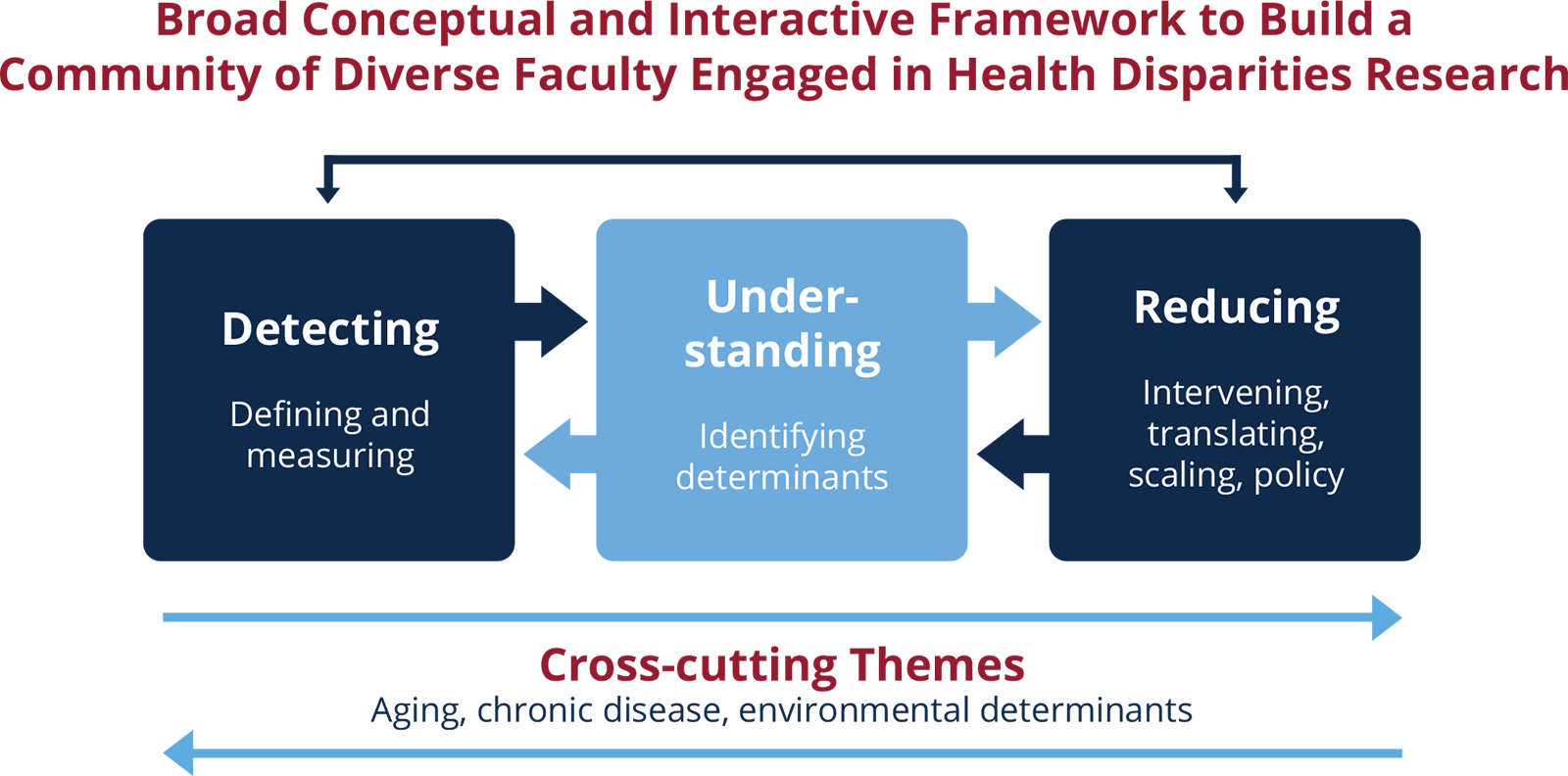Research Themes
Health Disparities Research
The Drexel FIRST program focuses on health disparities research. This focus builds on and leverages Drexel University’s existing strengths in health equity, including:
- Research Infrastructure
- Centers of Excellence
- Community and Health System Partnerships
- Expertise in Population Health, Intervention Science, and Policy Translation

What Are Health Disparities?
Health disparities are: “Preventable differences in the burden of disease, injury, violence, or opportunities to achieve optimal health that are experienced by socially disadvantaged populations.” (CDC ). They are systematic and unfair. Sometimes the term “health inequities “ is used to refer to systematic differences in the opportunities groups have to achieve optimal health, leading to unfair and avoidable differences in health outcomes (Braveman, 2006; World Health Organization).
Health disparities and inequities across race, ethnicity, socioeconomic position, geography, gender and sexual orientation and disability status (among other dimensions) are large and persistent in the United State and other countries. And yet they are not “natural” but are the product of how societies are organized and are therefore amenable to intervention and policy.
What Are the Causes of Health Disparities?
We view health disparities as emerging from structures and systems operating through multiple interacting pathways and over the lifecourse.
Fundamental causes of disparities include unjust interlocking systems of inequality, racism, and other forms of discrimination that impact health through long and interdependent causal chains.
Multiple levels of influence (individual, interpersonal, community, society) play important roles in generating and sustaining disparities.
Various frameworks have been developed that provide a multi-factorial understanding of health disparities and the domains of influence. We use the NIMHD framework to understand the complexities of health disparities and the opportunities to impact population health.
What Do We Need To Do To Eliminate Health Disparities?
We believe that taking the actions necessary to eliminate health disparities requires characterizing them and making them visible (detecting), explicating the determinants and causal processes involved (understanding) and identifying the interventions and policies needed to eliminate them (reducing). We see detecting, understanding and reducing as interrelated. All are necessary to eliminate health disparities.
Drexel FIRST faculty span all three dimensions: detecting, understanding and reducing, and span description, etiologic studies, intervention science and policy design and evaluation.
What Aspects of Health Disparities Does Drexel FIRST Focus On?
Within the board field of health disparities we have identified three closely related areas of focus for Drexel FIRST that build on existing strengths at Drexel:
Aging: We focus on aging because despite the unprecedented longevity of individuals worldwide, not everyone has the opportunity to reach older ages or to age well. This is due to extreme disparities in education, income, resources, nutritious food and access to quality healthcare, as well as policies and practices – a result of social and structural determinants.
Chronic Disease: We focus on chronic disease because of the substantial contributions of chronic diseases to health disparities. Chronic diseases are affected by modifiable factors at multiple levels (communities, neighborhoods, families , individuals) operating over the lifecourse. They are amenable to interventions and policies not only within but also outside the health care sector (eg neighborhoods, housing, work among others).
Environmental Determinants: We focus on environmental determinants because environments broadly defined (housing, neighborhoods, air pollution and toxins, climate, as well as built , natural and social environments) are key contributors to health and health disparities. Environmental factors can be modified via interventions, regulations and policies.
Although we highlight these three areas, Drexel FIRST embraces all work on health disparities because we know that both determinants and outcomes are interrelated.
Research Areas of Focus
Within health disparities, there are three identified focus areas for Drexel FIRST that build on existing strengths at Drexel:
Aging
Chronic Disease
Environmental Determinants


